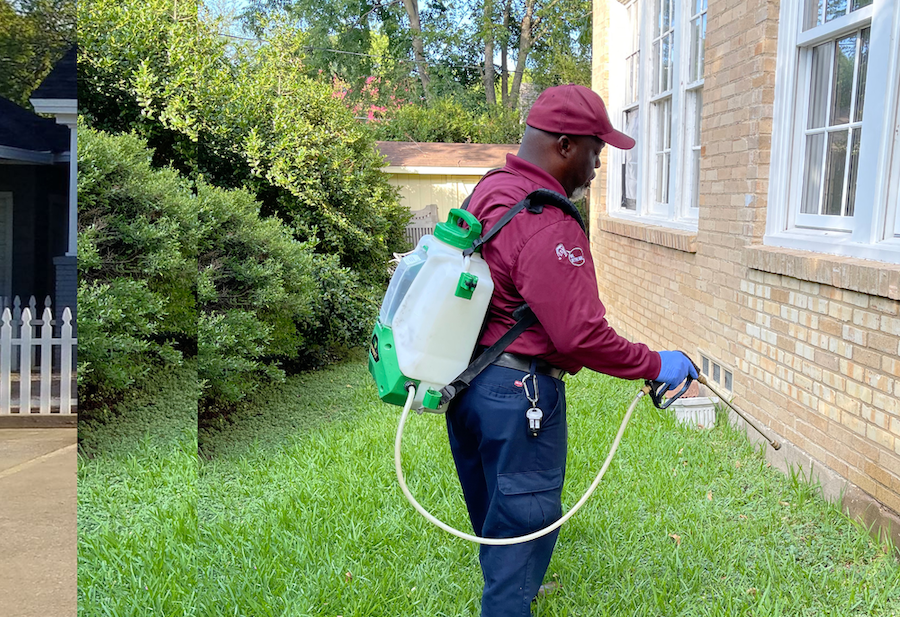Experienced A1 Exterminators Charlotte NC - Fast and Dependable Solutions
Bed Pest Therapy Failure: Contrasting Chemical Vs. Non-Chemical Solutions
In the realm of pest control, particularly when dealing with the persistent issue of bed bugs, the choice in between chemical and non-chemical treatment services can be an essential one. Both methods provide unique advantages and drawbacks, affecting factors such as performance, safety considerations, and total expense. By analyzing the nuanced information of each technique, a clearer understanding of which course to pursue in resolving a bed bug infestation can be attained.
Performance of Chemical Treatments
Chemical treatments for bed bug invasions have been extensively identified for their potent and rapid efficacy in eradicating these bugs. When considering the performance of chemical treatments, it is vital to comprehend that they can provide a quick and complete remedy to a bed bug problem.
Moreover, chemical treatments have the benefit of supplying residual results, indicating that they can remain to remove bed bugs also after the first application. This recurring activity is particularly beneficial in combating any kind of potential re-infestations. In addition, the quick action of chemical therapies can bring alleviation to individuals facing severe bed bug infestations, allowing them to reclaim control of their home rapidly.
Safety And Security Interest In Chemical Solutions
One critical element that calls for careful factor to consider when utilizing chemical options for bed pest treatment is ensuring the security of occupants and the atmosphere. While chemical treatments can be reliable in getting rid of bed pests, they might posture dangers otherwise dealt with properly. One of the main security interest in chemical options is the potential damage they can trigger to human health. Direct exposure to particular chemicals used in bed bug treatments can bring about respiratory problems, skin inflammation, or various other adverse responses, specifically in people with pre-existing problems or level of sensitivities. Additionally, incorrect application or dose of chemical pesticides can lead to poisonous deposits sticking around in the treated location, presenting lasting wellness threats to occupants.
Additionally, the environmental influence of chemical options is an additional considerable factor to consider. Some chemicals utilized in bed insect treatments might be harmful to helpful bugs, wildlife, and communities if they seep right into the soil or water supply. It is necessary to make use of chemical treatments judiciously, adhering to safety and security standards, and thinking about less poisonous options to reduce these threats and guarantee the safe and efficient administration of bed pest problems.
Advantages of Non-Chemical Techniques
Considering the potential safety and security issues and ecological impact connected with chemical solutions for bed pest treatment, discovering non-chemical approaches provides an appealing alternative with numerous unique advantages. Non-chemical methods offer a much safer alternative for households, particularly those with kids, people, or pets conscious extreme chemicals. These techniques get rid of the dangers of direct exposure to poisonous substances, reducing the capacity for damaging health effects. Moreover, non-chemical therapies are ecologically pleasant, as they do not add to air or water pollution, making them a sustainable choice for bug control.
In addition, non-chemical services can be reliable in targeting bed bugs, including hard-to-reach locations where chemical treatments might not permeate - A1 charlotte pest control companies. Approaches such as heat therapy, vacuuming, vapor cleansing, and mattress encasements provide comprehensive eradication without the use of harmful chemicals.
Limitations of Non-Chemical Treatments

Furthermore, non-chemical therapies often call for several applications to achieve effective elimination. This can be taxing and may not constantly ensure complete removal of all bed pests and their eggs, particularly in hard-to-reach or surprise locations.
In addition, the success of non-chemical therapies heavily counts on proper execution and thoroughness, which can be challenging for individuals without expert proficiency. Poor application of non-chemical techniques might cause incomplete elimination, causing persistent invasions and the need for extra therapies.
For that reason, while non-chemical treatments have their benefits, it is vital to acknowledge these constraints and consider them when establishing one of the most effective technique for taking care of bed bug problems.
Cost Comparison: Chemical Vs. Non-Chemical Options
Given the limitations connected with non-chemical treatments, a necessary aspect to review in the context of bed pest management is the price contrast between chemical and non-chemical options. In comparison, non-chemical therapies like warmth therapy or vapor can be much more expensive, with prices varying from $1,000 to $6,000 for an entire home. While the preliminary expense of chemical treatments might seem lower, numerous therapies may be called for to completely eliminate the infestation, possibly boosting the general price.
Verdict

Thinking A1 pest control services charlotte about the potential security worries and environmental influence connected with chemical services for bed pest therapy, exploring non-chemical techniques presents an encouraging option with numerous unique benefits.Provided the limitations linked with non-chemical treatments, an important element to evaluate in the context of bed pest administration is the price contrast in between chemical and non-chemical alternatives. In contrast, non-chemical therapies like heat therapy or steam can be a lot more expensive, with prices ranging from $1,000 to $6,000 for a whole home. While the initial expense of chemical therapies may appear lower, several therapies might be called for to totally eliminate the infestation, possibly increasing the general price.In final thought, when comparing chemical and non-chemical bed insect therapy options, it is essential to think about effectiveness, safety, advantages, limitations, and expense.